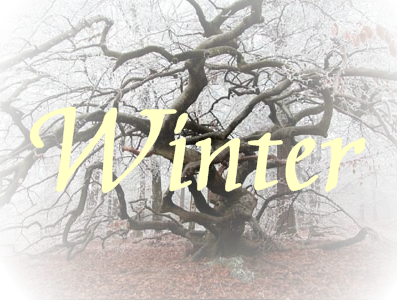
In winter the wolf's thick coat keeps them warm even on the coldest nights, they have practically no body heat loss through their fur (snow will not melt on a wolf's fur)
At night the wolf curls up, it covers its nose with its long tail. What this does is hold the warm air exhaled over the feet and nose, warming them. When the wolf inhales the air is filtered through the tail and is warmed by the exhaled air before it is breathed in.
The Wolf will feed heavily in the fall, just before winter. Hunting is difficult in the winter, the pack may have periods of inactivity and extra stores of fat will help them survive in these times. When spring finally comes the wolves emerge, this is a time of great excitement for the pack, often they run a round and play with each other, but after this short interaction it is time to feed.
Depending on the depth of the snow, wolves will choose a path that is easy to follow, The alpha wolf will form a single file line, the rest of the pack will follow, with the pups last. They will follow old game trails, frozen lakes and other paths of least resistance.
When hunting in winter the wolf will conserve energy whenever possible, by following the same trail as the prey animal, staying upwind, and staying out of sight of the prey as long as possible. When it is time to strike the wolf will start wagging their tails with excitement. Some times when young pups are with the hunt they may dash after the prey in the excitement and spoil the hunt.
Wolves will more likely prey on young, sick or older animals past there prime, but the wolf being opportunistic will hunt a strong healthy animal.
In late December the female wolf will go into heat, at this time the alpha pair will start a courtship or bonding, within five to seven days the pair with copulate several times. As with the dog, the two will remain locked for a period of up to thirty minutes.

 Free Forum Hosting
Free Forum Hosting